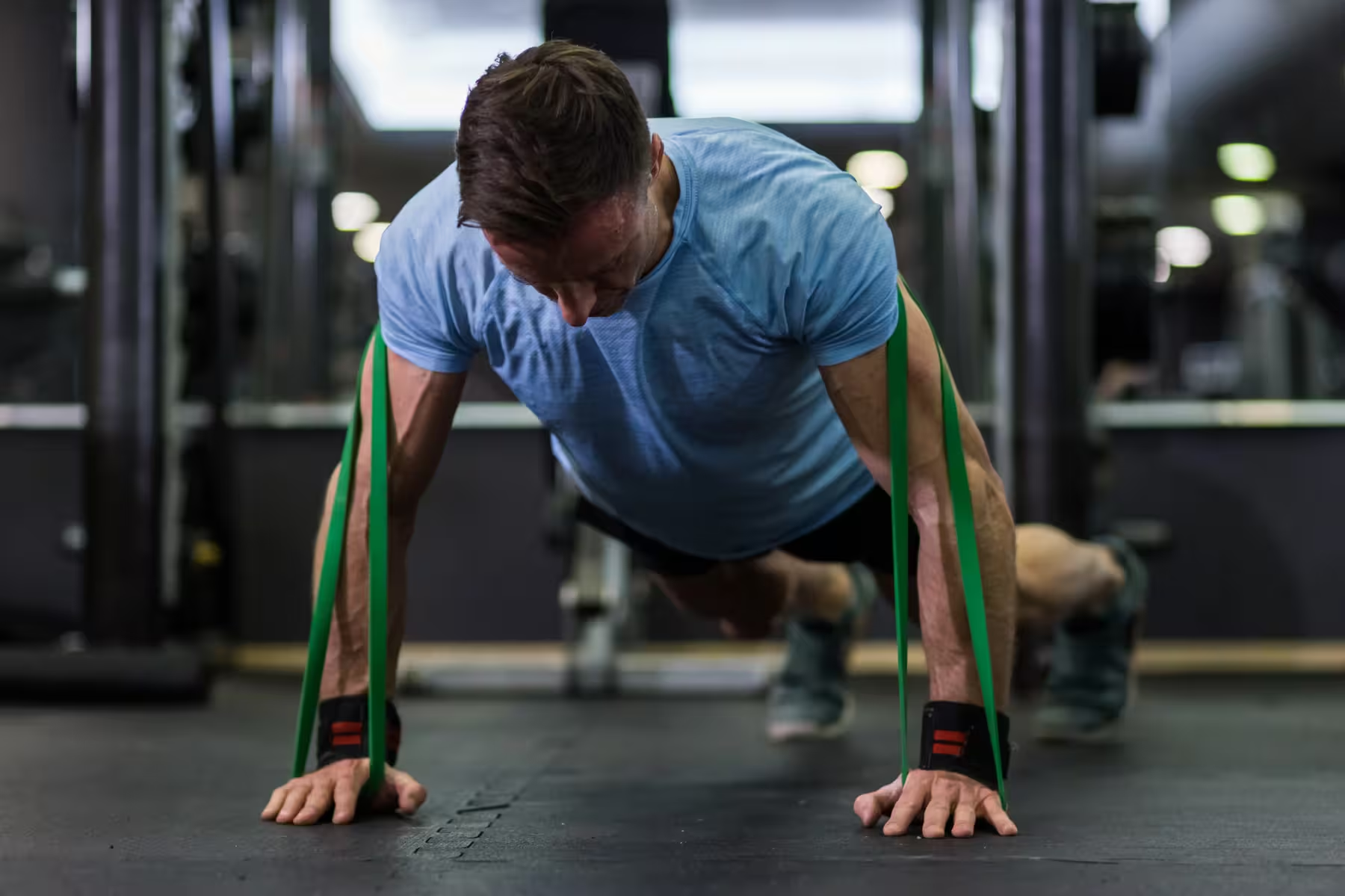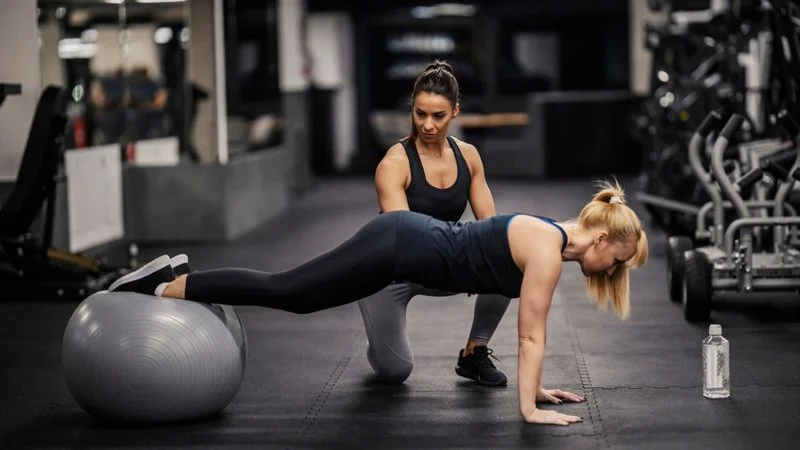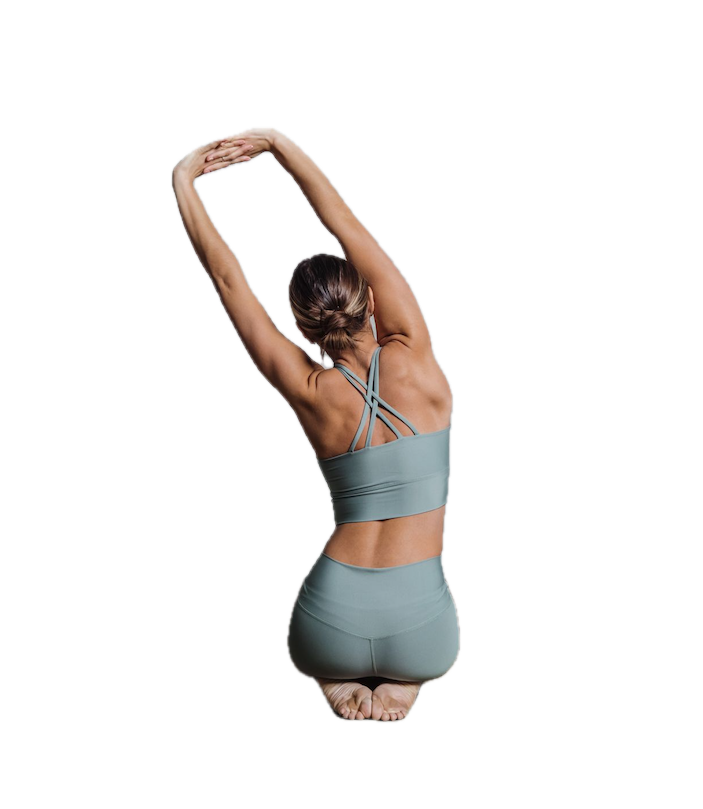
Fitness Trends 2025: Virtual Training and Augmented Reality
The fitness world is constantly evolving, and 2025 promises to be a revolutionary year with the consolidation of innovative technologies like virtual training and augmented reality (AR). These trends are transforming how people work out, making fitness more accessible, personalized, and engaging.
What is Virtual Training?
Virtual training involves using online platforms or apps that allow users to access guided workouts led by instructors, often in real time or via recorded videos. These solutions enable training at home, at the gym, or anywhere with internet access. In 2025, virtual training is expected to become even more sophisticated, featuring:
- AI-Based Personalization: Workout plans tailored to the user’s level, goals, and performance.
- Real-Time Interactivity: Live sessions with immediate feedback from trainers.
- Virtual Communities: Integration with social networks and support groups to boost motivation.
Augmented Reality: An Immersive Experience
Augmented reality is opening a new chapter in fitness by overlaying virtual elements onto the real world. With the help of AR glasses or mobile apps, users can experience more dynamic and engaging workouts, such as:
- Interactive Classes: Joining sessions where the virtual instructor appears in the user’s physical space.
- Gamification: Turning workouts into fun challenges, like running through a virtual forest.
- Enhanced Technique: Real-time correction of movements through sensors and visual projections.
Benefits of Virtual Training and Augmented Reality
These technologies offer significant advantages for users of all levels:
- Accessibility: Train anywhere, anytime.
- Increased Motivation: Immersive experiences and virtual challenges make workouts more captivating.
- Personalization: Tailored workouts enhance effectiveness.
- Safety: Real-time posture correction reduces the risk of injuries.
Impact on the Fitness Market
With the advancement of virtual training and AR, the fitness market is becoming more inclusive and diverse. Traditional gyms are integrating these technologies into their services, while innovative startups are launching products that redefine the concept of exercise. In Portugal, platforms like TreinoEmCasa.com have the opportunity to lead this revolution by offering technological solutions tailored to the local reality.
How to Get Started?
For those looking to explore these trends, here are some tips:
- Explore Virtual Training Apps: Look for reputable platforms that offer free trials.
- Research AR Glasses: Affordable devices are already available for fitness use.
- Focus on Consistency: Even with advanced technologies, regularity is key to achieving results.
Conclusion
Virtual training and augmented reality are trends reshaping the fitness landscape in 2025. These tools provide innovative, accessible, and personalized experiences, allowing more people to achieve their goals in a fun and effective way. Are you ready to embrace this new era of fitness?

Fitness Trends 2025: Sustainable Physical Activity
With growing concerns about the environment and sustainability, the fitness world has not remained indifferent. In 2025, we are witnessing an evolution in the industry where the blend of physical activity and sustainability is shaping the future of fitness. This trend is reflected not only in the types of exercises but also in equipment, clothing, and training spaces.
1. Eco-Friendly Fitness Equipment
Sustainable equipment is gaining traction. Recyclable and biodegradable materials are now being used to produce yoga mats, dumbbells, and resistance bands. Additionally, there is a rising demand for devices that generate energy during use, such as stationary bikes that convert effort into electricity.
2. Sustainable Sportswear
Sports brands are investing in clothing made from recycled materials, such as plastic removed from the oceans. These garments, besides being functional and comfortable, help reduce environmental impact.
3. Outdoor Exercise and Connection with Nature
Activities like hiking, trail running, and yoga in natural parks remain popular. Beyond physical benefits, these practices promote a connection with nature and encourage environmental preservation.
4. Green Gyms
Sustainable gyms are gaining ground, featuring facilities that use renewable energy, water recycling systems, and eco-friendly construction materials. These spaces also implement initiatives like recycling programs and incentives for users to opt for public transport or bikes to commute.
5. Digital Fitness and Carbon Footprint Reduction
The digitization of the fitness sector is also a growing trend. Online classes, personalized workouts through apps, and virtual challenges have reduced the need for commuting, contributing to a smaller carbon footprint.
6. Education for Sustainability
Instructors and personal trainers are incorporating sustainability into their practices, promoting conscious choices in workouts and nutrition. These professionals encourage their clients to adopt healthy and sustainable habits in daily life.
Benefits of Sustainable Physical Activity
- Reduced Environmental Impact: Choosing sustainable equipment and spaces contributes to environmental conservation.
- Social Awareness: Promotes a more conscious and responsible lifestyle.
- Physical and Mental Health: Activities like outdoor exercise offer additional benefits, such as stress reduction and increased well-being.
How to Embrace the Sustainable Trend in Everyday Life
- Choose Sustainable Equipment and Clothing: Opt for brands that value the environment.
- Train Outdoors: Whenever possible, choose natural environments.
- Reduce Plastic Use: Replace disposable bottles with reusable ones.
- Join Local Communities: Encourage collective activities that promote sustainability.
The future of fitness is walking hand in hand with environmental awareness. By adopting these practices, we not only improve our health but also contribute to a healthier planet.

How to Train Agility: Tips and Strategies to Improve Your Performance
Agility is one of the most important physical abilities for athletes and fitness enthusiasts. Whether in football, tennis, basketball, or any other sport, agility enables you to change direction quickly, maintain balance, and respond efficiently to unexpected situations. In this article, we will explore how to effectively train agility, including tips, strategies, and practical exercises.
Benefits of Training Agility
Before diving in, it’s important to understand the benefits of agility training:
- Improves sports performance: Enhances responsiveness and speed in dynamic situations.
- Reduces injury risk: Strengthens stabilizing muscles and improves motor coordination.
- Increases functionality: Facilitates everyday movements, such as avoiding obstacles or reacting to surprises.
- Burns calories: Agility training is intense and helps with weight loss.
Principles of Agility Training
Training agility requires focusing on several principles:
- Proper technique: Efficient movement is key. Invest in correct movement patterns to avoid injuries.
- Reaction speed: Develop the ability to respond quickly to external stimuli.
- Coordination: Work on synchronizing different parts of your body.
- Explosive strength: Strengthen muscles for fast and powerful movements.
- Consistency: Regular practice is essential for gradual improvement.
Tips to Improve Agility
1. Include Directional Change Exercises
Exercises like zigzag runs, dribbling drills, and slaloms help develop the ability to change direction quickly.
2. Train with an Agility Ladder
An agility ladder is an excellent tool for improving coordination, speed, and movement control.
3. Add Jumps and Plyometrics
Exercises like box jumps, lateral jumps, and burpees enhance explosive strength and body control.
4. Use Reactive Stimuli
Work with partners or interactive drills requiring quick reactions, such as catching a ball or responding to auditory/visual cues.
5. Improve Mobility and Flexibility
Include dynamic stretches and mobility work to optimize your movements.
Practical Exercises to Train Agility
- Zigzag Runs: Set up cones in a straight line with space between them. Run in a zigzag pattern, changing direction quickly.
- Agility Ladder Drills: Perform movement patterns like “two in, two out” to increase foot speed.
- Lateral Jumps: Jump from side to side over a low object, maintaining balance.
- Ball Drills: Work on coordination and reaction with quick passes or controlled movements.
- Short Sprints: Perform quick runs over short distances, changing direction on cue.
Integrating Agility Training
For the best results, combine agility training with other workout types, such as:
- Strength training: Builds the muscles needed for explosive movements.
- Cardiovascular training: Improves endurance and performance during intense sessions.
- Functional training: Involves movements that replicate real-life or sports-specific scenarios.
Conclusion
Agility training isn’t just for elite athletes – anyone can benefit from it. Start incorporating some of the exercises and principles mentioned in this article and watch your performance improve over time. Don’t forget to warm up before training and stretch to prevent injuries.
If you’re looking for more tips and personalized training plans, explore our other articles at Treino.eu.

How to Train Endurance: Tips and Strategies to Enhance Your Performance
Endurance is a fundamental pillar for any athlete or fitness enthusiast. Whether you aim to run longer distances, improve gym performance, or simply increase daily energy levels, training endurance is essential. This article provides science-based tips and strategies to help you enhance your endurance effectively and sustainably.
1. What is Endurance?
Endurance can be defined as the body’s ability to sustain physical effort over an extended period. There are two main types:
- Cardiovascular Endurance: Relates to the efficiency of the heart, lungs, and blood vessels in delivering oxygen to the muscles during exercise.
- Muscular Endurance: Refers to the ability of muscles to perform repeated contractions or sustain effort over time.
Both types are crucial for performance and quality of life.
2. Tips for Training Endurance
2.1. Incorporate Aerobic Exercises
Activities like running, cycling, swimming, or brisk walking are fundamental for improving cardiovascular endurance. Start with sessions of 20 to 30 minutes, 3 to 5 times a week, and gradually increase the duration and intensity.
2.2. Practice High-Intensity Interval Training (HIIT)
HIIT is an excellent way to improve both cardiovascular and muscular endurance. Alternate short periods of intense exercise (20-60 seconds) with active recovery intervals. For example:
- 30 seconds of fast running followed by 1 minute of walking.
- Repeat for 15 to 20 minutes.
2.3. Strengthen Your Muscles
Strength training also contributes to endurance. Focus on exercises that target major muscle groups, such as squats, deadlifts, push-ups, and planks. Perform 2 to 3 sessions per week with moderate repetitions (8-12) and weights that challenge your muscles.
2.4. Set Realistic Goals
Set clear and achievable goals. For instance, if your goal is to run 10 km, start by completing 2 or 3 km and gradually increase the distance.
3. Key Considerations in Endurance Training
3.1. Rest and Recover
Rest is as important as training. Allow your body time to recover by sleeping at least 7 to 8 hours per night and avoiding consecutive intense training sessions without proper recovery.
3.2. Maintain a Balanced Diet
A balanced diet is crucial to support your training and recovery. Include:
- Complex carbohydrates: Your primary energy source (whole grain bread, oats, rice).
- Lean proteins: For muscle repair (chicken, fish, tofu).
- Healthy fats: For sustained energy (avocado, nuts).
Stay hydrated before, during, and after workouts.
3.3. Respect Your Body’s Limits
Avoid overexertion, which can lead to injuries or extreme fatigue. Listen to your body and adjust your training when necessary.
4. Benefits of Improving Endurance
- Increased energy and productivity in daily life.
- Better cardiovascular and muscular health.
- Reduced stress and improved mood.
- Enhanced longevity and quality of life.
5. Suggested Reading
- 5 Benefits of HIIT for Your Health and Well-Being
- How to Create a Personalized Training Plan
- The Importance of Recovery in Training
Improving endurance is a process that requires dedication, consistency, and patience. With the right strategies, you can achieve your goals and exceed your limits. Remember, the most important part is enjoying the journey and celebrating every milestone!

How to Train for Speed: Tips and Strategies to Boost Your Performance
Speed is one of the most valued aspects in many sports and everyday life, especially for those looking to enhance physical performance. However, training for speed isn’t just about “running faster.” It’s a process that involves technique, strength, coordination, and consistency. In this article, we explain how you can effectively train to improve your speed.
1. The Importance of Technique
Before anything else, mastering proper technique is essential. Poor posture or uncoordinated movements can limit your ability to run or move quickly.
Tips to improve your technique:
- Maintain an upright posture, with your torso slightly leaning forward.
- Swing your arms in sync with your legs.
- Take short, quick strides, focusing on efficiency rather than brute force.
2. Explosive Strength Training
Strength is crucial for generating speed. Building strong leg muscles and a stable core provides a solid foundation for more powerful and quicker strides.
Recommended exercises:
- Squats (with or without weights).
- Plyometric jumps (box jumps or vertical jumps).
- Explosive lunges.
- Resistance sprints, such as running with a band or pushing a sled.
3. Sprints and Interval Training
Short sprints and high-intensity interval training are essential for developing speed. These workouts mimic real-life situations where you need to give maximum effort in a short amount of time.
Example interval workout:
- 10 seconds of maximum sprint.
- 50 seconds of walking or light jogging.
- Repeat 8-10 times.
This type of training improves cardiovascular capacity and builds resistance to fatigue.
4. Mobility and Flexibility
Tight muscles can restrict fast movements. Spending time on mobility and flexibility enhances your range of motion and reduces the risk of injury.
Suggestions:
- Perform dynamic stretches before training (e.g., leg swings, torso rotations).
- Finish your workouts with static stretches to relax your muscles.
- Incorporate yoga or Pilates sessions into your weekly routine.
5. Coordination and Agility
Speed isn’t just linear—it also depends on how well you can change direction quickly. Training agility and coordination is essential for sports and activities that require rapid shifts in pace.
Recommended exercises:
- Agility ladder drills.
- Cone drills (slalom or zigzags).
- Reaction games using visual or auditory cues.
6. Recovery and Consistency
Recovery is just as important as training. Overtraining can lead to injuries and reduced performance. Allow your body to recover and maintain a consistent routine to see progress.
Recovery tips:
- Rest for at least 48 hours between intense speed training sessions.
- Include light training or active recovery days.
- Stay hydrated and eat a balanced diet to support muscle regeneration.
7. Follow a Structured Plan
To achieve the best results, it’s essential to follow a structured plan tailored to your needs. At treino.eu, you’ll find training programs designed for all levels and goals, including speed-focused workouts.
Conclusion
Training for speed requires a holistic approach that combines technique, strength, mobility, and consistency. With dedication and the right plan, you can significantly improve your quickness and physical performance.
💡 Extra Tip: Want to train for speed at home in a practical and effective way? Explore the programs available at treino.eu and start improving today!

Benefits of Working Out at Home Every Day
n today’s busy world, finding time to go to the gym can be a challenge. This is where daily home workouts become a practical, effective, and convenient solution to take care of both your body and mind. Discover the key benefits of including daily home workouts in your routine.
1. Flexible Schedule
Working out at home allows you to choose the time that best fits your routine. Whether it’s early morning, during your lunch break, or in the evening, this flexibility makes it easier to stay consistent.
2. Save Time and Money
No need to spend time commuting or money on gym memberships. With a structured and adaptable plan like Treino 365, you can make the most of your home space to reach your fitness goals.
3. Comfort and Privacy
Training in the comfort of your home offers a more relaxed experience. No crowds, no waiting for equipment—you can fully focus on your workout at your own pace without distractions.
4. Consistency and Discipline
By making daily workouts a habit, you strengthen not only your body but also your mind. Regular practice helps develop discipline, turning fitness into an integral part of your daily routine.
5. Physical and Mental Health Benefits
Daily workouts help:
- Improve cardiovascular health and build muscle strength;
- Promote weight loss and boost energy levels;
- Reduce stress and enhance mood through the release of endorphins.
These benefits become even more apparent with regular, consistent practice—something that’s easy to achieve with home workouts.

The Benefits of Personalized Training in Your Routine
In a fast-paced and demanding world, finding an efficient solution to achieve your health and fitness goals can be challenging. This is where personalized training shines as an effective and tailored approach to meet your individual needs. In this article, we’ll explore the key benefits of personalized training and how it can transform your routine and results.
1. Tailored to Your Needs and Goals
Everyone has unique goals, limitations, and preferences. A personalized training plan is designed specifically for you, considering factors such as:
- Current fitness level;
- Medical conditions or injuries;
- Specific goals (weight loss, muscle gain, endurance improvement, etc.);
- Preferences for certain types of training (e.g., cardio, strength, yoga).
By working with a professional who understands these variables, you increase your chances of achieving your goals safely and efficiently.
2. Increased Motivation and Consistency
Having a personalized plan that aligns with your preferences makes workouts more engaging and less monotonous. Additionally, a trainer monitors your progress and adjusts the plan as needed, keeping you motivated and committed to your goals.
3. Injury Prevention
One of the biggest advantages of personalized training is the technical guidance it provides. Your trainer ensures that you perform exercises correctly, reducing the risk of injury while maximizing results. Furthermore, they adapt the plan if you have pre-existing injuries or specific conditions, ensuring safe training.
4. Faster and Sustainable Results
With a plan tailored to your needs, every training session is optimized for your goals. This specific focus reduces wasted time and effort, helping you achieve results more quickly. Moreover, consistent effort and ongoing adjustments promote long-term, sustainable changes.
5. Flexibility and Convenience
Personalized training can be done in various settings:
- At the gym;
- At home;
- Outdoors;
- Or even online through digital platforms.
This flexibility allows you to integrate training into your routine without major disruptions, making it more accessible and convenient.
6. Holistic Development
A good trainer goes beyond creating a workout plan. They help you understand the importance of other critical aspects, such as:
- Balanced nutrition;
- Quality sleep;
- Stress management.
This holistic guidance contributes to an overall improvement in your health and well-being.
Start Today!
Personalized training isn’t just for athletes or celebrities—it’s for anyone looking to make the most of their time and effort. Invest in yourself and your well-being with the support of a qualified professional.
Try personalized training at treino.eu and discover how it can transform your routine and help you achieve your goals!

How Health Coaching Can Improve Your Mental Well-Being
Today, mental well-being is just as important as physical health. With increasingly demanding routines, stress, anxiety, and mental fatigue have become common. Health coaching emerges as an innovative and effective solution to help people achieve better quality of life. In this article, we explore how this approach can transform your mental well-being.
1. What is Health Coaching?
Health coaching is a collaborative process between a coach and a client, aimed at promoting positive and sustainable lifestyle changes. This process is based on identifying personal goals, creating action plans, and providing ongoing support to overcome challenges. In the context of mental well-being, the focus is on improving emotional management, reducing stress, and building resilience.
2. Benefits of Health Coaching for Mental Well-Being
a) Stress Reduction
Coaching helps identify sources of stress and develop personalized strategies to manage them. Through techniques such as mindfulness and time management, it is possible to reduce stress levels and improve daily focus.
b) Improved Self-Esteem and Confidence
Working with a coach allows you to set clear goals and achieve them progressively. This process strengthens self-esteem and confidence, promoting a more positive self-view.
c) Promotion of Healthy Habits
A balanced lifestyle is essential for mental health. Coaching encourages practices like regular exercise, balanced nutrition, and quality sleep, which directly impact mental well-being.
d) Increased Resilience
Resilience is the ability to deal with challenges and recover from difficult situations. Through coaching, it is possible to develop tools to face adversity with greater security and optimism.
3. How Does the Health Coaching Process Work?
a) Initial Assessment
The process begins with a comprehensive evaluation of the client’s current state, including habits, goals, and challenges.
b) Goal Setting
Together, the coach and client define clear and achievable objectives tailored to individual needs.
c) Personalized Action Plan
Based on the established goals, a detailed action plan is created, including daily practices and techniques to overcome barriers.
d) Ongoing Support
The coach provides regular support, helping the client stay on track and adjusting strategies as needed.
4. Who Can Benefit from Health Coaching?
Health coaching is suitable for anyone looking to improve their well-being, but it is especially useful for:
- Those struggling with stress and emotional management;
- People looking to adopt healthier habits;
- Those seeking better balance between personal and professional life;
- Individuals facing moments of transition or significant challenges.
Conclusion
Health coaching is a powerful tool for improving mental well-being, helping to create positive and lasting changes in your life. By investing in yourself and your emotional balance, you are taking an important step toward living with more happiness and fulfillment. Try this approach and discover how small changes can lead to significant transformations.

5 Tips to Build Healthy Habits That Last
Adopting healthy habits is essential for improving quality of life, boosting energy, and preventing health issues. However, the challenge often lies not in starting but in maintaining these habits over time. In this article, we share five practical tips to help you build healthy habits that truly last.
1. Set Clear and Realistic Goals
Define specific, measurable, and achievable objectives. For instance, instead of saying “I want to be more active,” try setting a goal like “I will walk for 30 minutes, three times a week.” Clear goals help you stay focused and avoid frustration.
2. Start with Small Changes
Avoid trying to change everything at once. Small steps are easier to integrate into your routine and are more likely to become permanent. For example, start by drinking more water daily or adding an extra serving of vegetables to your meals.
3. Establish Routines
Consistency is key to turning an action into a habit. Choose specific times of the day to practice your new healthy habits. For example, stretch in the morning or prepare healthy snacks the night before.
4. Track Your Progress
Monitor your achievements to stay motivated. You can use an app, a journal, or even a chart at home. Celebrating small wins reinforces your commitment to yourself.
5. Seek Support
Having the support of friends, family, or a community can make all the difference. Share your goals and accomplishments, and encourage each other. If possible, consider working with a professional, such as a trainer or a nutritionist, for personalized guidance.
Conclusion
Building healthy habits is a process that requires dedication and patience. With clear goals, small changes, consistency, tracking, and support, you can create a more balanced and fulfilling life. Take the first step today and see how small actions can lead to significant transformations.

Why Choose a Health Coach? Your Path to a Healthier, Happier Life
In today’s world, where health information is abundant yet often overwhelming, finding a clear path to your wellness goals can feel daunting. This is where a Health Coach steps in—a dedicated professional who helps you navigate the complexities of fitness, nutrition, and lifestyle changes.
In this article, we’ll explore the role of a Health Coach, how they can benefit your life, and why this personalized approach to health might be the game-changer you’ve been looking for.
What is a Health Coach?
A Health Coach is a certified professional trained to support you in achieving your health and wellness goals through tailored strategies and ongoing guidance. Whether you’re aiming to lose weight, build strength, or simply lead a healthier lifestyle, a Health Coach works alongside you, providing the expertise and accountability you need to succeed.
Key areas where a Health Coach can assist:
- Personalized nutrition plans: Aligned with your goals and preferences.
- Stress management strategies: To enhance mental and physical well-being.
- Customized workout programs: Suitable for all fitness levels.
- Habit building: Creating sustainable, long-term health improvements.
Top Reasons to Work with a Health Coach
1. Tailored Support for Unique Needs
Your journey is unique, and so should be your plan. A Health Coach crafts a personalized roadmap based on your lifestyle, goals, and challenges.
2. Consistent Motivation and Accountability
Staying on track can be tough. A Health Coach ensures you remain focused and motivated, celebrating your wins and helping you overcome setbacks.
3. Sustainable Results
Forget quick fixes. The goal is to instill lasting habits that lead to lifelong health improvements.
4. Evidence-Based Approach
At Treino.eu, our Health Coaches combine the latest research with practical solutions to provide you with the best tools for success.
How to Get Started
Are you ready to take control of your health? Discover the benefits of working with a Health Coach today:
👉 Learn more and sign up here
Through personalized coaching, expert guidance, and a focus on sustainable results, you can transform your goals into achievements.
Recommended Reads on Treino.eu
- The Role of a Health Coach: Transforming Wellness Journeys
Understand how a Health Coach can support your unique health journey. - 7 Simple Tips to Build Healthy Habits
Small, actionable steps that lead to big changes. - How Stress Impacts Your Health—and What You Can Do About It
Explore effective stress management strategies. - Personalized Fitness Plans: Why One Size Doesn’t Fit All
Learn how tailored workouts can help you reach your fitness goals faster.
Invest in yourself today. With the guidance of a Health Coach, you can unlock your full potential and create a healthier, happier life. Start your transformation now!
4o

